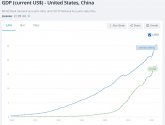Global demand is slowing, manufacturing industries that are significantly export-driven will inevitably suffer. Tariffs, sanctions, and active efforts by the West to seek out alternative suppliers are also having an effect.PMI for industrial sector still below 50 indicating contraction and for service sector is slowing. Expect more stimulus coming soon.
Look at German, South Korean, Vietnam, and Japanese PMI. All have basically been in contraction since the start of 2023, and earlier. Such is the fate of export-led industries in the age of falling Western demand.
Interesting enough though, India's PMI has actually been experiencing rapid growth. I know this community doesn't care much for Indians, and it is obviously coming from a low base, but the contrast with Vietnam is very interesting, since both are emerging economies, yet Vietnam's manufacturing PMI has been struggling since late 2022, while India's manufacturing PMI has been surging.
If this continues, we could be seeing a major shift in Global South investments, as investors tend to follow the herd.
The Biden-Modi meeting was without question motivated by the Americans salivating at the prospect of India becoming a new engine of growth for their investors.

